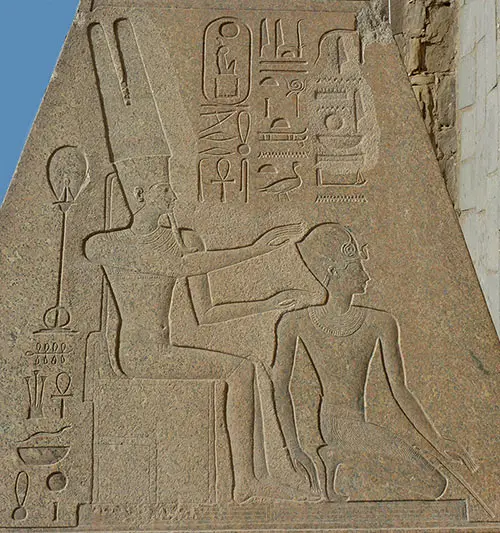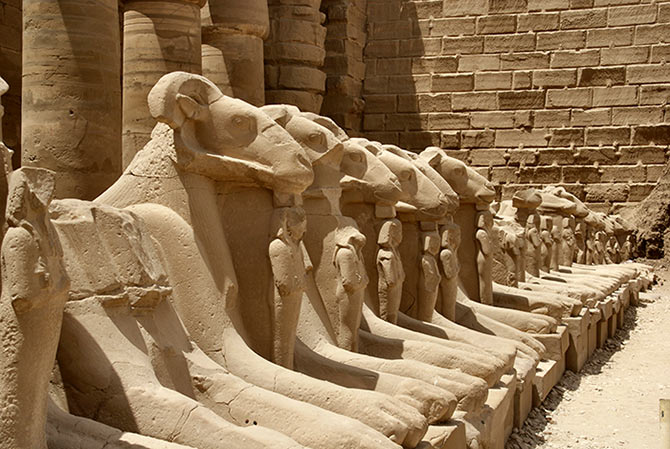Worship
The history of the development of Amun’s worship is fascinating. He started as a deity worshiped only in Thebes. After the pharaohs moved their capital to Thebes, Amun became a major god. During the Eighteenth Dynasty, he assimilated with Ra and grew in importance.
Many of the Eighteenth Dynasty kings commissioned frescos showing Amun-Ra fathering them. This was also the way rulers whose legitimacy was in doubt proved their right to rule. When Hatshepsut began ruling for her stepson, she commissioned murals showing Amun-Ra fathering her. She used these murals to legitimize her kingship and remain pharaoh until her death.
As the Eighteenth Dynasty progressed, Amun-Ra’s cult grew in wealth and power. Soon, the cult rivaled the pharaoh in power and prestige. This fact contributed to Akhenaten’s decision to declare Aten the only god in Egypt. He moved the capitol to a new city but as soon as he died, Amun-Ra’s priests regained their power. Thebes became the capitol again and the cult of Amun-Ra continued to gain power.
 © Hannah Pethen – Hatshepsut knealing before Amun
© Hannah Pethen – Hatshepsut knealing before Amun
Cult
Worship of Amun was widespread and the pharaohs’ awarded the cult with land a percentage of the booty from conquests. One of the important positions in the cult was the “god’s wife of Amun” and the queen or queen-mother often fimagecentered this role. These women gained power and depictions show them making offerings to gods.
Two festivals at Thebes involved the images of Amun and other deities traveling to other places:
- During the Beautiful Feast of the Valley, images of the Thebean Triad were taken out of Karnak. They traveled on a boat, across the Nile, to visit the mortuary temples on the west bank.
- At the celebration of the Opet Festival, Amun traveled from the Great Temple at Karnak to the temple at Luxor. This festival celebrated the sacred marriage between the god (Pharaoh) and the god’s wife (the queen).
Temples
Temples dedicated to Amun were built throughout Egypt and Ramses II built or rebuilt several of them. Three of these temples are those at Deir el-Medina, Luxor and Karnak:
- Deir el-Medina is located on the western bank of the Nile across from Thebes and near the Valley of the Kings. Ramses II built this temple and two dedicated to the other members of the Thebean Triad.
- Amun’s temple at Luxor was first built around 1500 BC and has been an active religious site up to the present day. People worshiped a unique version of Amun, named Amenemope (Amun of Opet). Two names for the Luxor Temple are the “Place of Seclusion” or the Southern Opet. This temple was in the heart of ancient Thebes and a processional road connected it to Karnak.
- The temple complex at Karnak is the largest temple complex built by humans and the Great Temple of Amun is its crown jewel. Generations of pharaoh’s added to or rebuilt sections of this temple. Criosphinxes (sphinxes with ram heads) line one of the processional ways. Several courts, obelisks, and pylons, carved with hieroglyphics, are part of this temple. Several temples are part of this complex including one dedicated to Aten. Akhenaten built it during the first five years of his reign, before he moved the capital to Amarna.








































